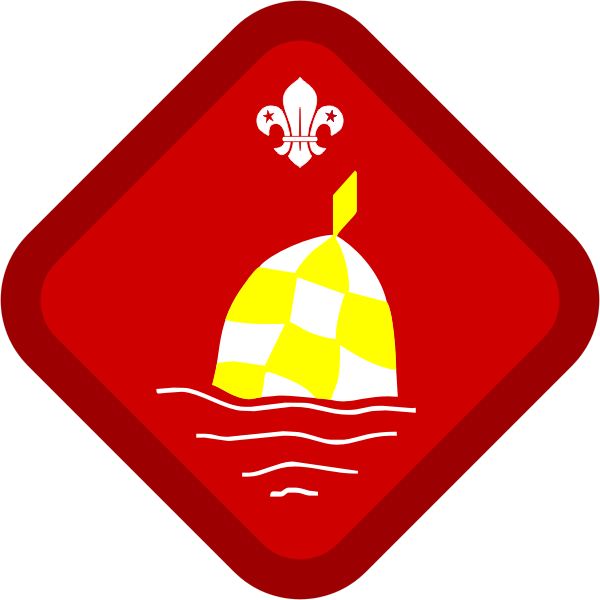


Pilot
- Hold the Seaman (Coxswain’s Mate) Badge.
- Complete the following:
- Read a mariner's Compass marked in points and degrees and have a knowledge of compasses generally, including variation and deviation.
- Be able to read a chart and understand the abbreviations and signs used; explain the use of the compass; the meaning of the term 'Chart Datum’.
- Know the different types of buoys, beacons, lighthouses and light vessels in general use, the usual danger, storm, fog and distress signals including distress signals from aircraft.
- Understand the use of the barometer in forecasting the weather and be able to discuss the Beaufort wind and sea scales.
- Have a more detailed knowledge of the Rule of the Road, including lights, sound signals and certain visual signals.
- Have a thorough knowledge of local boating rules, including harbour regulations, water restrictions and local rescue and lifesaving services.
- Complete either a or b:
- Complete a series of not less than three cruises or short expeditions afloat in local waters. The cruises are to relate to a study of local waters in connection with pilotage and weather conditions. All cruises to have certain objectives and must be organised to include the following:
- Ability of the candidate to take charge of a pulling boat and a sailing boat of at least 5 metres and an inboard motor craft over the full area as sea activities in the Troop.
- Ability to lay off three courses on the chart. The courses planned need not have a definite destination but must be varied to cover the recognised local area as for the above to the extreme limits. Undertake the three journeys in relation to the projected courses, plotting positions at regular intervals using the three methods of cross bearings, transits and dead reckoning.
- One cruise under cover of darkness (under supervision if considered desirable, compatible with local sea conditions) to familiarise candidate with navigation lights, lighted channels, moving and anchored sea traffic, beacons and other relevant features.
- To demonstrate that the candidate is able to take soundings with lead and line and sounding pole in deep and shallow water respectively.
- To observe sea traffic on the move, including fishing craft riding to their gear and be able to specify recognised fishing grounds and any rights associated with the grounds.
- To have a knowledge of local hazards such as unusual weather conditions, rocks and fouled ground, underwater obstructions such as: unmarked wrecks, groynes, stakes and any other dangerous features peculiar to the area, and be able to identify buoys, beacons and other marks of caution, including sound warnings.
- To be able to advise on suitable moorings and anchorages, for different types of craft and emergency landing places for small craft.
- To be able to transmit and read the letter 'U' when made by lamp or on siren in Morse.
- Complete at least two cruises along the coast each to the extent of approximately 10 miles by either pulling boat, motor boat, sailing boat or as leader of two double seater canoes or three single seater canoes in company. Both cruises to have certain objectives and must be followed by the completion of a detailed report, in the form of a log but preferably in the form of notes, supported by diagrams and sketch maps.
- Accompany the crew of a pulling, sailing or motor boat undertaking an adventure journey, either as a member of a crew or additional to complement, and act as pilot for the journey.
Notes
The journey may be that specified under the "Adventure" section of the Seaman (Coxswain's Mate) Badge, but the candidate may not count this same journey towards qualification for that badge.
The candidate may be in charge of the crew.
The candidate can act as pilot to the crew from another youth organisation and undertaking a similar journey provided all the conditions can be met.
The journey may be that also specified under the 'Expedition' section of the Coxswain Badge and if the candidate is in charge of the expedition, subject to successful achievement, he may count this same journey towards qualification of both Coxswain and Pilot Badges.
The journey to be at least 24 hours duration and to include a night spent in camp. The outward distance to be of 6 miles or more.
The alternative condition (as approved in relation to local conditions) under the 'Expedition' section of the Leading Seaman (Coxswain) Badge may also count towards the award of the Pilot Badge, provided the candidate leads (and pilots) the expedition and at least three single sealer canoes take part. All other conditions with regard to the pre-journey summary and after discussion and verbal report must be accomplished.
The Scout will be expected to submit in advance a brief summary (in note form with diagrams) of the course and destination, current data, anticipated moorings, times involved and emergency communications.
On return the candidate will be expected to be able to discuss the expedition in relation to the journey, indicating fairly accurately on chart the actual course pursued with the aid of cross bearings and transits, etc., taken during the voyage. Special attention should be given to any peculiar sightings which may include lights, weather conditions, water traffic, etc.
